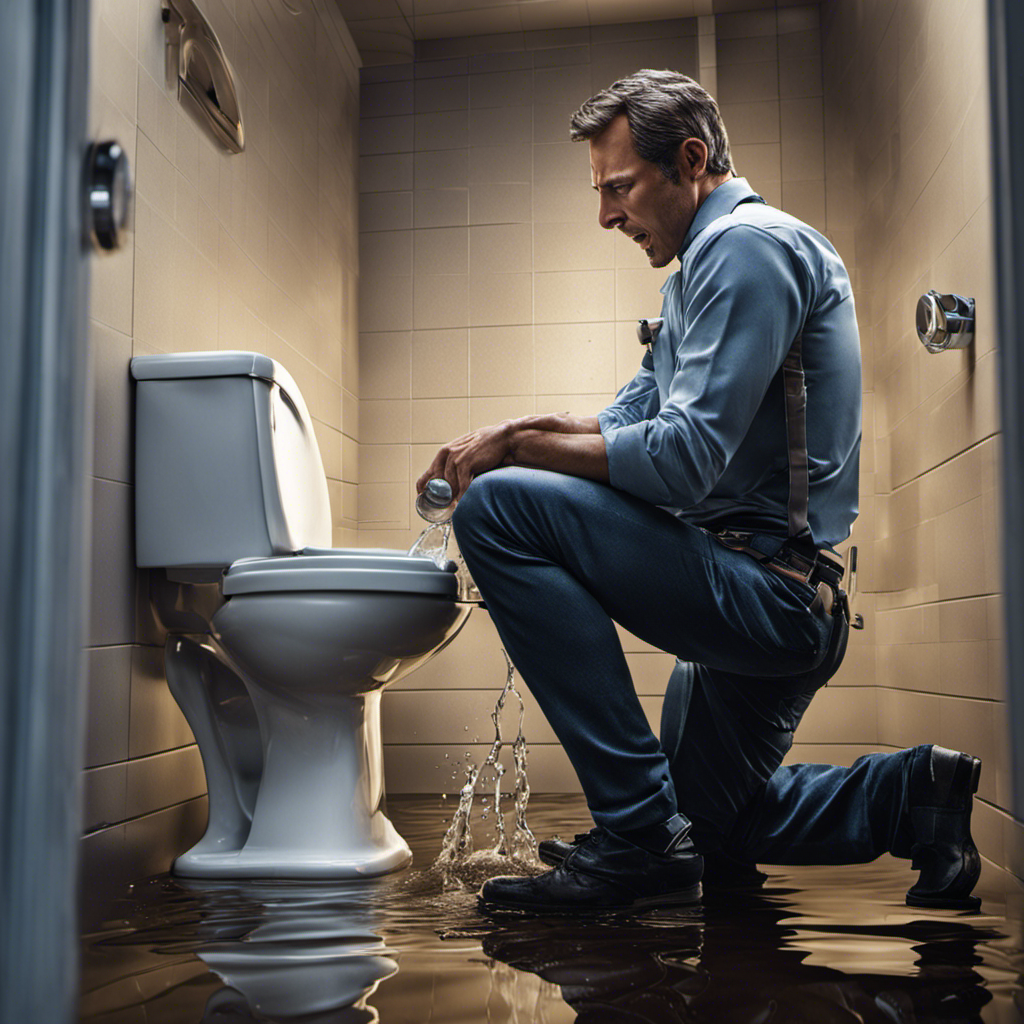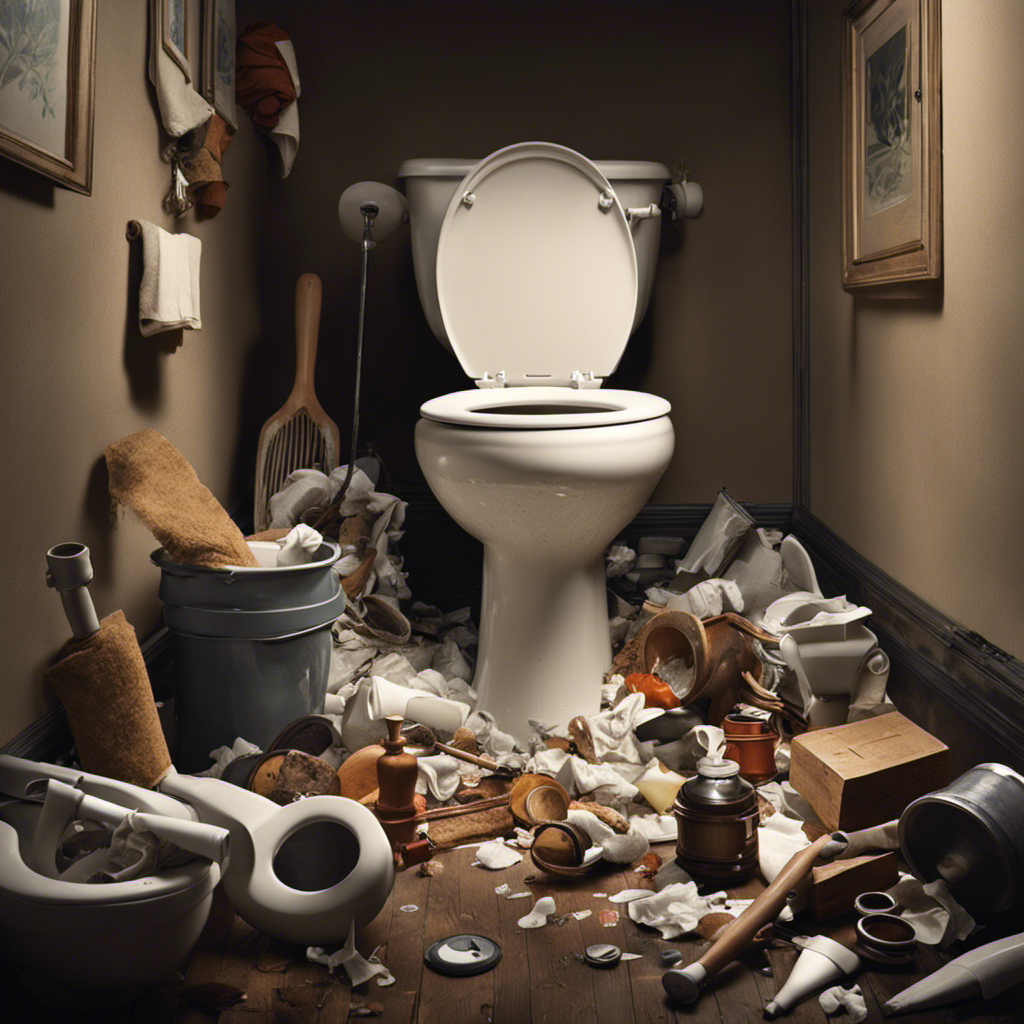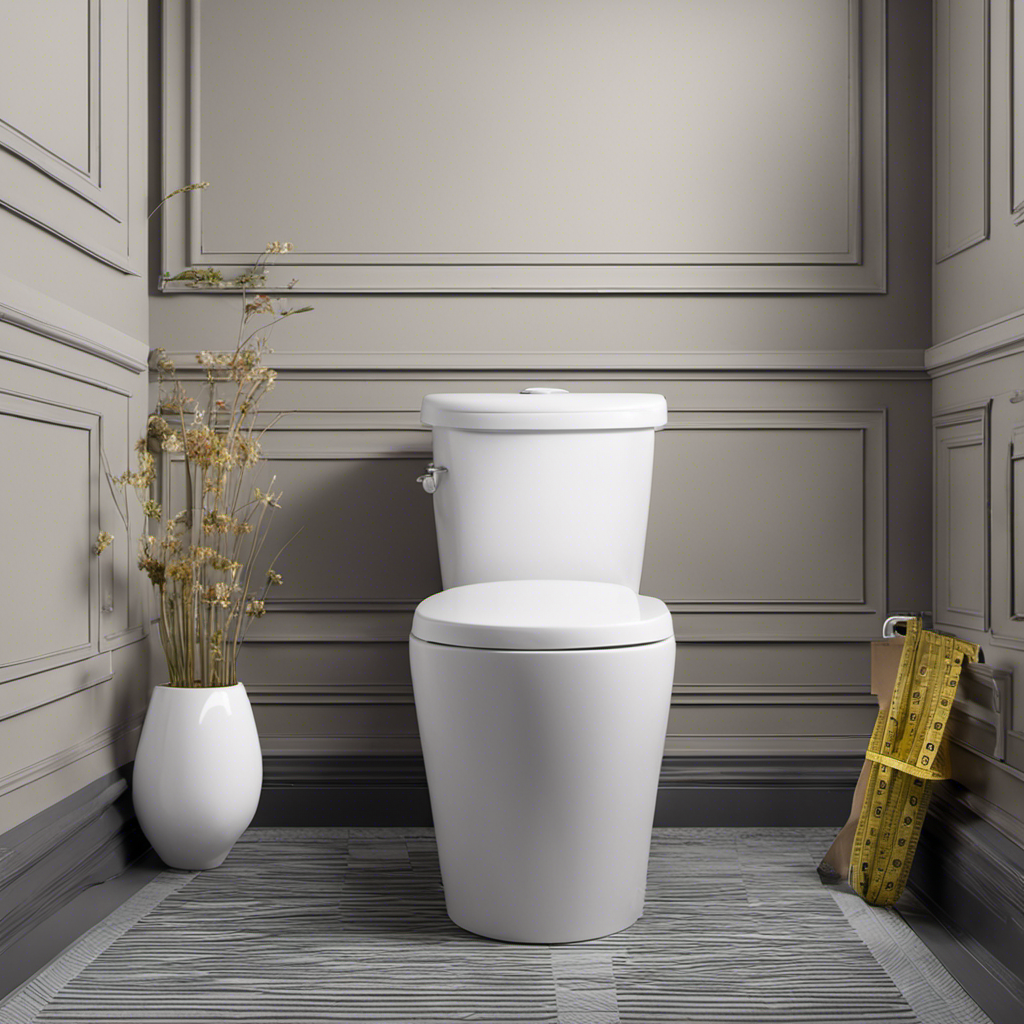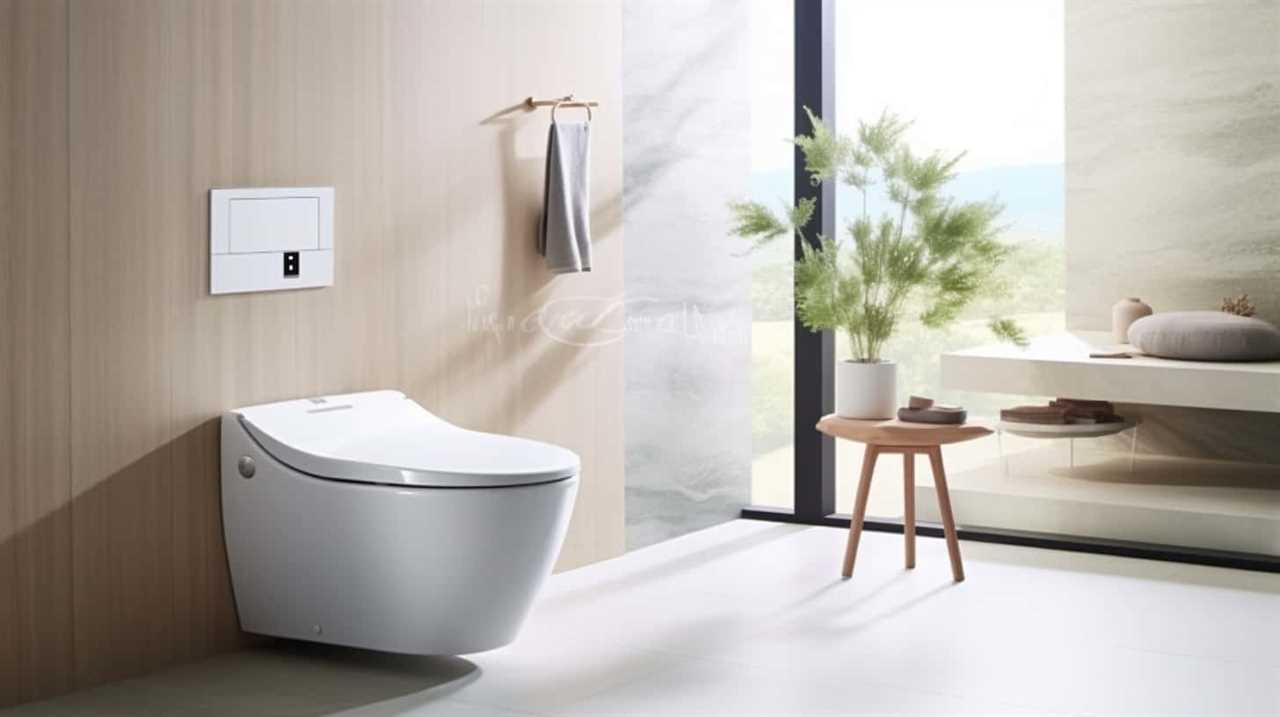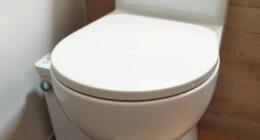Have you ever wondered why your toilet won’t stop running? It’s frustrating and can lead to wasted water and higher utility bills.
In this article, I’ll guide you through the common causes of a running toilet, how to identify the issue, and steps to fix it.
I’ll also share some tips to prevent your toilet from running in the future.
If you’re tired of the constant sound of running water, keep reading to troubleshoot the problem.
Key Takeaways
- Faulty flapper is a common cause of a running toilet.
- Identifying signs of a running toilet include constant sound of water flowing and increase in water bill.
- Steps to fix a running toilet include checking and replacing the flapper valve if necessary.
- To prevent a toilet from running, regularly check for leaks and replace worn-out parts.
Common Causes of a Running Toilet
One of the most common causes of a running toilet is a faulty flapper. The flapper is a rubber valve that sits at the bottom of the tank and controls the flow of water from the tank into the bowl. When the flapper becomes worn or damaged, it may not seal properly, resulting in water constantly running into the bowl. This can lead to wasted water and increased water bills.
Regular maintenance is important to prevent toilet clogging and address any issues with the flapper before they escalate. It is recommended to check the flapper regularly and replace it if necessary. By maintaining the flapper and addressing any issues promptly, you can prevent a running toilet and conserve water.
Now, let’s move on to how to identify a running toilet.
How to Identify a Running Toilet
To identify if your toilet is continuously running, you can simply listen for a constant sound of water flowing. If you hear this sound, it is a sign that your toilet is running and needs to be fixed.
Here are three signs of a faulty toilet that indicate the need for toilet repair services:
-
Constantly running water: If you hear water flowing continuously, even when you’re not using the toilet, it indicates a problem with the flushing mechanism.
-
High water bill: A running toilet can waste a significant amount of water, leading to an increase in your water bill. If you notice a sudden spike in your bill, it’s worth checking if your toilet is running.
-
Toilet bowl not filling up properly: If the water level in your toilet bowl is consistently low or takes a long time to fill up after flushing, it could be a sign of a running toilet.
If you notice any of these signs, it’s important to contact toilet repair services to fix the issue and prevent further water waste.
Steps to Fix a Running Toilet
If you’re experiencing a continuously flowing sound of water, you can try fixing a running toilet by checking the flapper valve for any damage.
The flapper valve is located at the bottom of the toilet tank and is responsible for regulating the water flow.
To inspect it, simply lift the lid of the tank and look for any signs of wear or tear on the flapper valve.
If you notice any cracks or leaks, it’s time to replace the valve.
You can find replacement flapper valves at most hardware stores or you can hire professional toilet repair services for assistance.
Remember, DIY toilet repair can save you money, but if you’re unsure or uncomfortable with the process, it’s best to seek professional help.
Now, let’s move on to some tips to prevent a toilet from running.
Tips to Prevent a Toilet From Running
Now, let’s explore some helpful tips for avoiding a continuously flowing toilet. To conserve water and prevent leaks, here are three essential steps to follow:
-
Regularly check for signs of a leaky toilet. Look for water pooling around the base or a constant sound of running water. A leaky flapper valve or faulty fill valve could be the culprit.
-
Adjust the water level in the tank. Ensure that the water level is about an inch below the top of the overflow tube. If it’s too high, water may continuously flow into the bowl.
-
Replace worn-out parts. Over time, components like flapper valves and fill valves can deteriorate, leading to leaks. Replace any faulty parts promptly to prevent a continuously running toilet.
Troubleshooting a Persistent Running Toilet
One possible sentence could be: "Check the water level in the tank to see if it’s too high, as this might be causing the continuous flow." When troubleshooting a persistent running toilet, it is important to consider the impact it can have on water bills. Hiring toilet repair professionals can help identify and resolve the issue efficiently. To understand the potential impact on water bills, consider the following table:
| Scenario | Water Usage | Cost per Month |
|---|---|---|
| Running toilet (24/7) | 8,000 gallons | $50 |
| Leaking toilet (one drip) | 540 gallons | $3.38 |
| Fixed toilet | 0 gallons | $0 |
As seen in the table, a running toilet can waste a significant amount of water, leading to higher water bills. To avoid this, it is crucial to address the issue promptly and seek professional help if needed.
Conclusion
In conclusion, a running toilet can be a frustrating issue in any household. By identifying common causes and following the necessary steps to fix it, you can prevent water waste and save money on utility bills.
Interestingly, did you know that a running toilet can waste up to 200 gallons of water per day? Therefore, it is essential to address this problem promptly to conserve water and maintain a properly functioning toilet.
By troubleshooting and implementing preventive measures, you can ensure a toilet that stops running efficiently.
